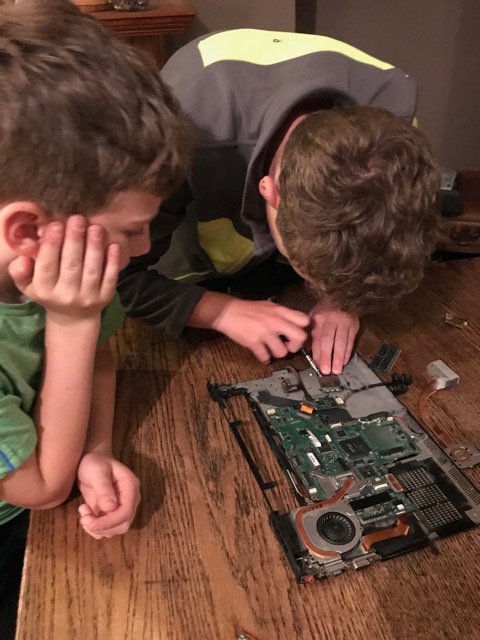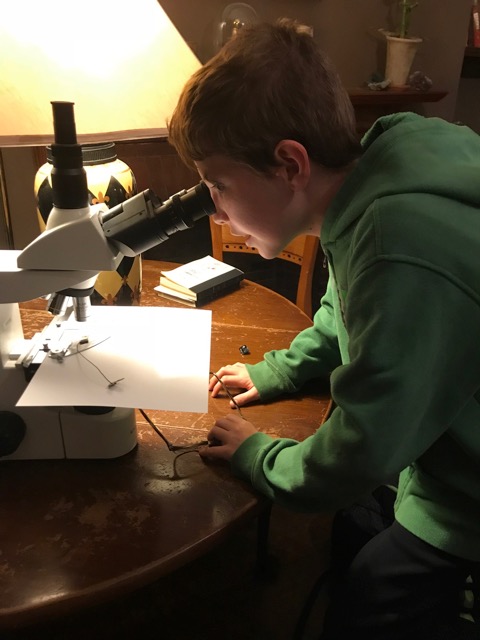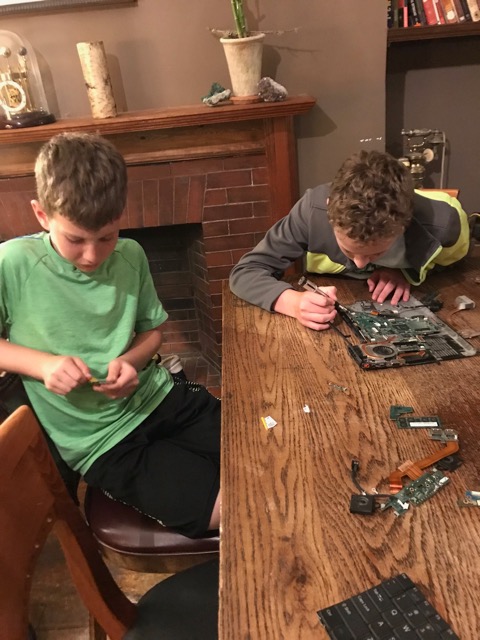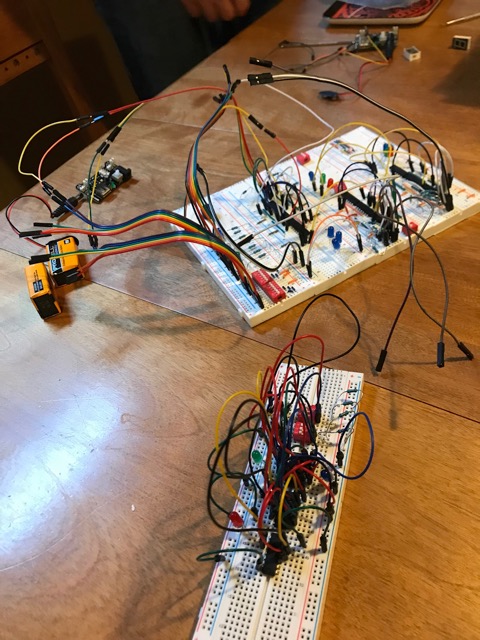Complex Machines and Smaller Modules
The focus of today's class was to show how complex machines and devices are formed from ever smaller modules: from printed circuit boards (PCB) and integrated circuits (IC) all the way down to the lowly transistors and resistors. Beyond even the smallest component level lies the material science and physics that underlies and ties our universe together. We got inquisitively messy by taking apart an old laptop and found that the motherboard PCB is actually connected to a dozen other small submodule PCBs each dedicated to a single task: one to read touchpad input, another to receive connections from the hard drive or CD drive (and the hard drive/CD drives themselves!), one for all special hotkeys, power button and speakers, etc, all connected by beautiful ribbon cables like information highways. We found and popped out the CPU and saw that it was in fact just a big IC. We had a blast.
We also finished building out logic gate binary adders! Everyone was very proud of their creation. We tried to assemble them into one single larger 8 bit adder, each student’s breadboard acting like a 2-bit submodule, but unfortunately during session we were unable to make it work. (After class the instructor tried to assemble it again, and did so with success. Circuit building requires a certain quiet finesse oftentimes).
We followed up this activity with a video and discussion on how to display the binary, LED-lit numbers using a digital 7-segment display. We found that about 50 gates would be required to correctly decode the binary to a 7-segment display! We may explore alternatives next class.



